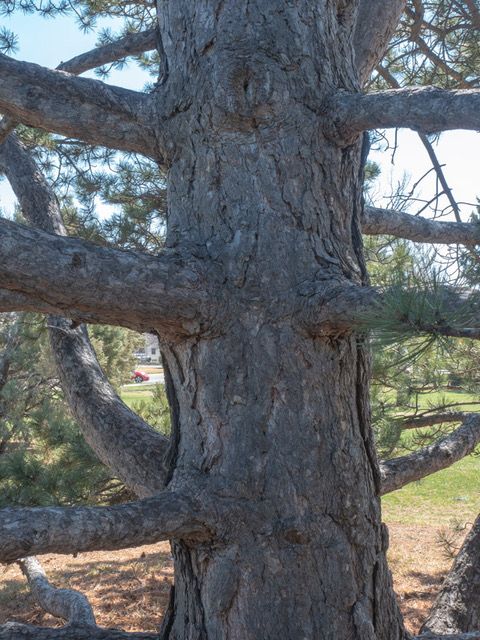Austrian pine (Pinus nigra) was introduced to North America in 1759. This two- needled evergreen, also called European black pine and common black pine, is native to Europe and Asia.

Quite possibly this species should hold a place of honor in American history. Due to its heartiness, wind tolerance, and ability to grow in poor soil, during the Franklin D. Roosevelt administration the U.S. Forest Service was tasked with planting 222 million trees across the Great Plains to combat the effects of the Dust Bowl. As the Arbor Day Foundation reports, these trees have thrived for more than 75 years in some of the poorest planting conditions in our country. Although this conifer is now susceptible to many more diseases and pests, according to The Tree Book* it is an inexpensive tree which is often planted in areas too small for its eventual size.
The Wood Database says Austrian pine is easy to work with but its primary use has been as pulp for the paper industry. It may also be used for boxes and crates. Like most pines, its resin has many medicinal uses, including fighting respiratory ailments, kidney problems, and for poultices, plasters, and steam baths.

According to The Christmas Tree Growers Association of New York, the tradition of a Christmas tree originated in Germany and became popularized in England when Queen Victoria and Prince Albert had a tree placed in Windsor Castle. At one time Austrian pines were used as holiday trees in the U.S. Their usage has fallen out of favor, possibly because of the shearing needed for a perfect shape. Its branches don’t fill in until the trees are at least ten years old and it develops more slowly than the Scotch pine. Smaller homes than those of the 1800 and early 1900s might also have caused the large pine to fall out of favor. Its spaced and heavy branches were useful for those with large ornaments and lots of room. Still, at least thirteen Christmas tree farms list Austrian pine as one of their selections. Although only moderately fragrant, the trees hold their needles well. The main drawback from the growers’ perspective might be the trees aren’t as resistant to pests as other species and may be more difficult to ship.
The tallest Austrian pine, over 155’tall, grows in Montenegro, while the oldest, in Austria, is thought to be around 1000 years of age. In the U.S. the Champion tree grows in Washington state. In Colorado, the overall largest tree is found in Greeley. Its height is half of the world champion.
To find 154 Austrian Pine (Pinus nigra) in City Park, look along Jackson Street where Magnolia Street intersects. If Magnolia went through the park, it would cross a small cluster of conifers. Of the three trees, the large tree with more of a rounded top should be the Austrian pine.
*The Tree Book: Superior Selections for Landscapes, Streetscapes, and Gardens. Dirr, Michael A. and Warren, Keith S., Timber Press, 2019















